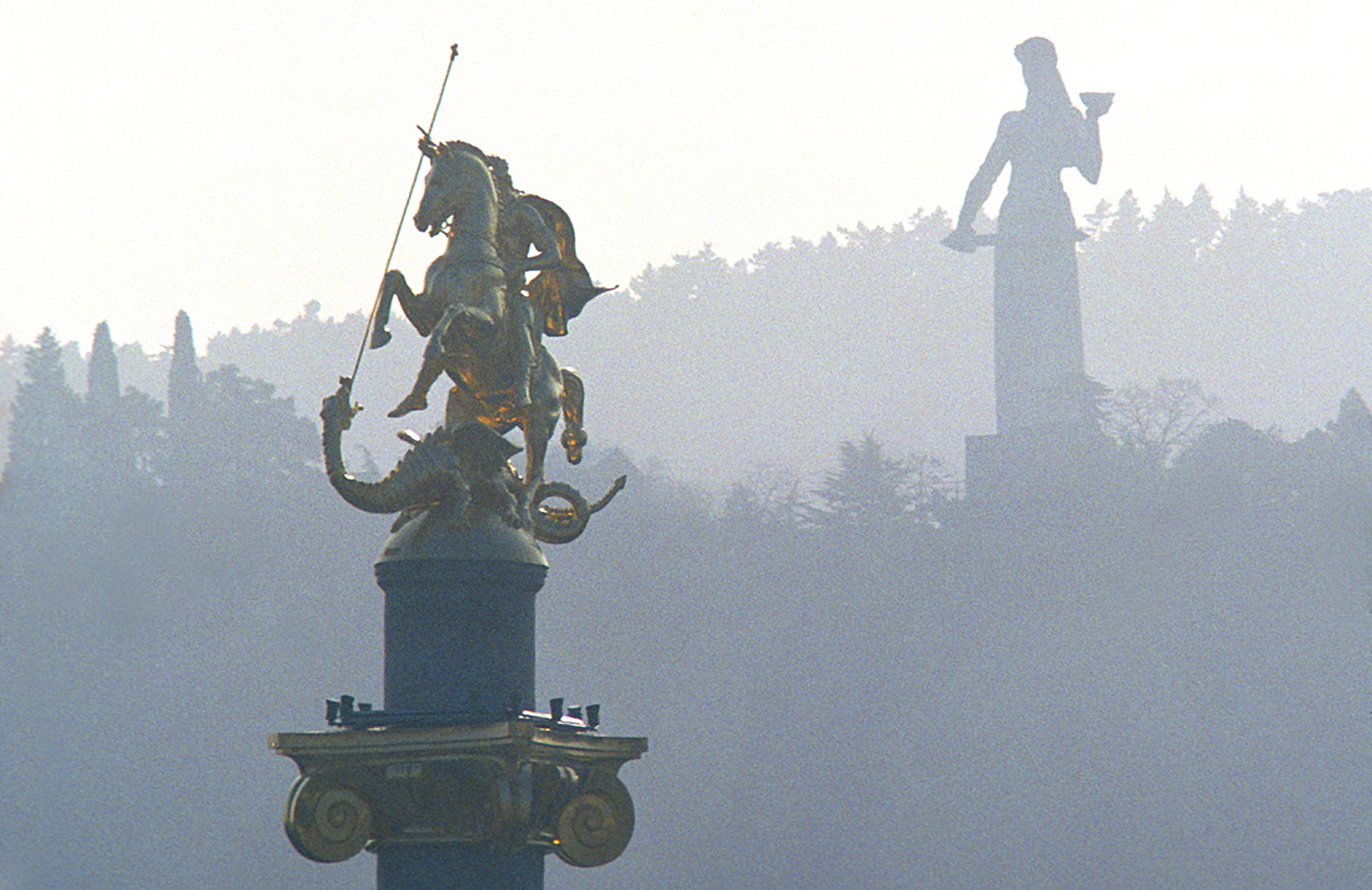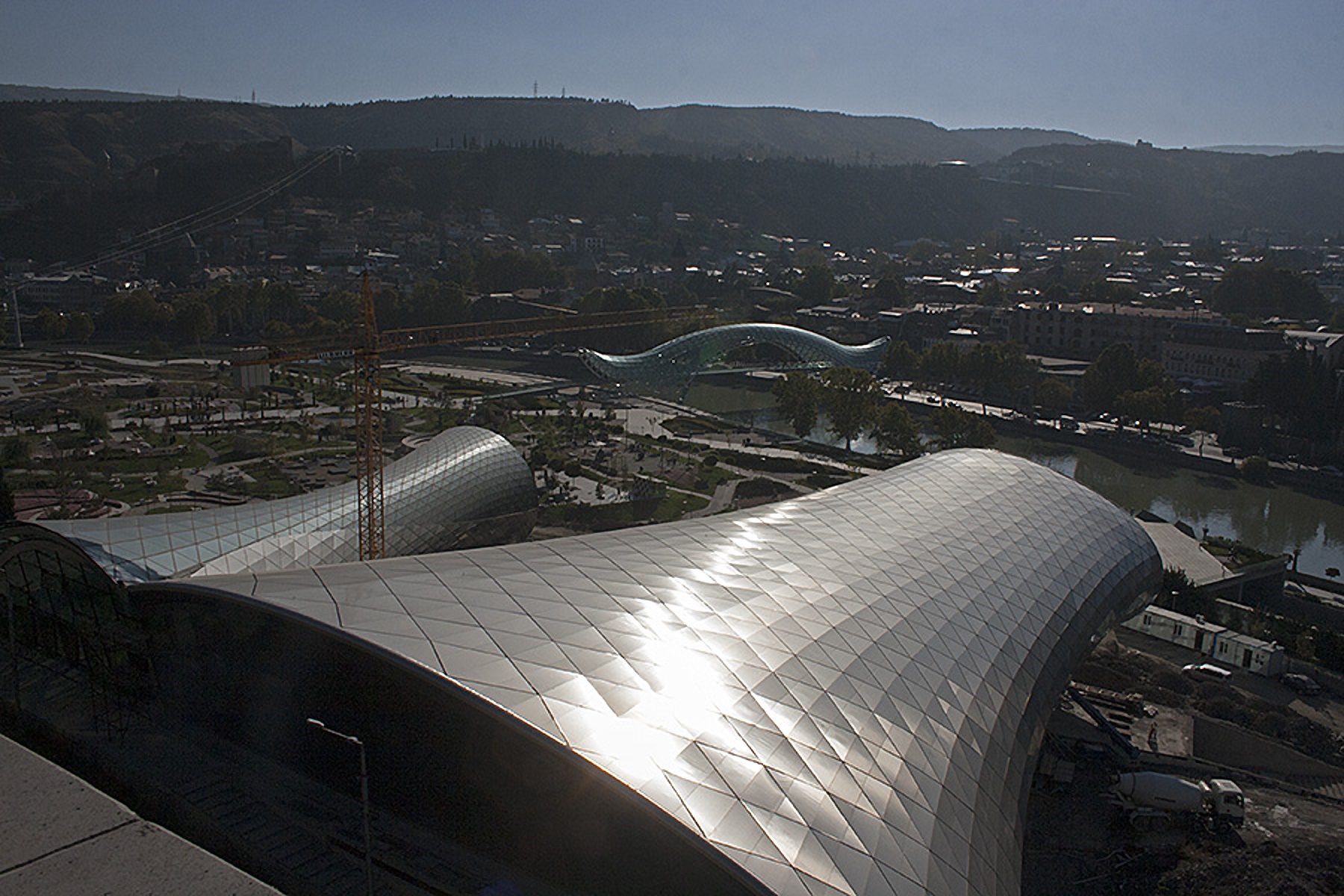Imagine a city over 1500 years old…which, according to history, has been more or less completely destroyed an average of twice a century during its existence. Hard to fathom? Welcome to Georgia’s “new” capital, Tbilisi (the old one, nearby Mtskheta, oversaw the introduction of Orthodox Christianity during its run, from about 500 BC to 500 AD.)
Given such a tumultuous history, perhaps it is normal for the visitor to expect to see a great variety of architectural styles present in the city whose name means “warm” (from its hot springs). This is certainly the case. Not only have the ancient beginnings left their mark and been reconstructed as faithfully as possible, but quite a few more modern influences and generations of rulers and cultures have also sprinkled themselves liberally around the metropolis of about 1.5 million dwellers.
Here we will skip over the truly ancient, and the Russian Empire-era and most of the Soviet period too, in order to focus on what has come after all these. There is plenty to astound and amuse from these latter years, whether its choice and construction were orderly and lawful or sped through under the table as vast monies changed hands. Most of our examples are to be found in or not far from the city center.

The Funicular Restaurant, having been built in 1905 but also experiencing a long shutdown, is now fully restored as of 2014. Seating 440 for high-class Georgian and European cuisine and more in several distinct facilities and offering a ballroom too, it perches at the top of the funicular railway which takes you to it (a road does too) on Mtatsminda, the Holy Mountain, overlooking Tbilisi. Locationally, architecturally and gastronomically it is a delight as well as a physical highlight. There was even a secret tunnel entrance to it for the use of Soviet dignitaries!

Synonymous with the 1500th anniversary celebration of Tbilisi as the capital, Kartlis Deda, or the Mother of Georgia, is a statue built in 1958 on the top of Sololaki Hill, overlooking the Old City. She was designed by Elguja Amashukeli but has had a makeover since the original construction, replacing her metal outer layer with a new, more realistic one, She
holds a bowl of wine in one hand, for guests, and a sword in the other, for enemies. However, the joke is that she is telling guests to “Drink this or I’ll cut your throat!”—only partly an exaggeration, for those who have experienced some of the forceful gastronomic urging of local hospitality…
It looks like, and is nicknamed, the Lego Building; but our next stop is actually the former HQ of the Ministry of Transport and current HQ of the Bank of Georgia as of 2007 [main photo]. Its 18 stories are gradually being re-covered entirely by magnificent green creepers, to boot. A joint design of architects Giorgi Chakhava and Zurab Jalaghania, completed in 1975, this one is thus also a Soviet-era piece, and it is located at the end of Yuri Gagarin Street, overlooking the Mtkvari, Tbilisi’s main river. A recently added all-glass cube
compliments its very right-angled structure and serves as the new entrance to it.
The Peace Bridge dates from President Saakashvili’s two recent terms, and can be found contrasting with everything around itself over the Mtkvari River in the Old City
near Metekhi church and bridge. Clearly a product of early 21st century architecture involving computer-aided design and esthetics, its colored LED lights flash in different patterns at night; its designer is Michele De Lucchi. Magnificent on its own but badly out of place or not, butt of jokes regarding its shape or not, this structure is unlikely to leave the viewer neutral.

The Rike Concert Hall and Exhibition Center is also expected to evoke a strong reaction in one of quite a number of directions. Another Saakashvili-era piece, designed by Massimiliano and Doriana Fuksas, it may be called by some “That pair of leftover bottles after the drinking party” or something similar. One can only hope that its acoustics are superb, as a way of giving meaningful purpose to its shape. Mikheil S. was certainly “on a roll”.
Wherever you go in Tbilisi, and also in many other parts of the whole of Georgia, the recently added police buildings are almost all faced in glass. This was yet another architectural statement by Saakashvili, meant specifically to say what it seemed to show: “We are transparent.” This was a sorely needed promise, given the previous terrifying corruption which
had run rife in the police, who were replaced, re-uniformed, re-trained, re-salaried, re-equipped with nice shiny new cars, and threatened into the bargain: “Shape up or ship out.” However, one does not need to take the analogy too far to come up with the joke that all these transparent buildings could still have basements… and hope for the best.
By Tony Hanmer
Photo source: georgiaabout
